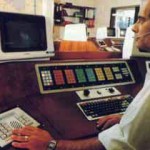Call Recording Series Part II: What Changed in Call Recording?
By Gregory J. Robb, Research Assistant, Applied Business Technologies, LLC
In Part One, we waxed nostalgic about the developments in the “answering machine” throughout the 20th Century.
In order to develop a deeper understanding of modern call recording, it is necessary to embrace change. We know that hardware has progressively evolved, but what about the influence of the computer? Put simply, it has added software and digital storage to the call recording domain. The implications are huge for call center Quality Assurance. Let’s look at change itself.
Technology
Obviously. However, it is important to remember technological evolution at both ends of the phone line.
In a globalized workforce, Call Recording can literally occur anywhere. It does. Customer service representatives (CSRs) field calls from all over the world in call centers all over the world. Technology has enabled companies to outsource customer service to call centers for Quality Assurance.
Call Recording technology provides numerous new tools for enhancing customer care. Call centers utilize Screen Recording, so supervisors can help CSRs in the moment. Digital call recording allows call centers to digitally log customer interactions for regulatory compliance and security purposes. The field of Speech Analytics, the process of call mining, provides new and invaluable forms of business intelligence (BI). Successful call centers use the new tools of call recording to gain and maintain a competitive edge.
Key Performance Indicators (KPI)
Technological revolution has generated a new lexicon of Key Performance Indicators (KPI) which verify call center efficacy. First-call resolution (FCR) is a much-coveted objective, but call recording(7) produces more detailed KPI data, such as: longest delay in the queue (LDQ), average speed of answer (ASA), average handling time (AHT) and staff shrinkage. Ultimately, customer satisfaction measurement is being expanded and augmented by the technological reach of call recording.
Speech Analytics – Call Mining
The 21st Century has borne Speech Analytics, an entirely new way to discover the business intelligence of future call center success. Speech Analytics is a platform-driven system for automated data mining of interaction between callers and customer service representatives (CSRs). Call centers can configure Speech Analytics to capture, categorize and analyze call recording data which was previously wasted. An optimum call center environment structures the vast, unstructured call information. From there, managers can improve the experiences of both customers and CSRs. Finally, Speech Analytics can identify potential new revenue opportunities for call centers.
People
Technology powers the people in call centers.
Managers and supervisors utilize Screen Recording to monitor their customer service representatives (CSRs). In fact, Screen Recording can be used to stagger CSR start times in order to discourage staff shrinkage, the amount of time a CSR is paid but unavailable to accept calls. Naturally, CSRs utilize computer technology in order to assist customers. Increasingly, customer service representatives are engaging multiple electronic forms of mobile contact from clients, such as email and chat. Therefore, managers can also utilize Screen Recording as a training tool.
Human and machine are melded in modern society. Stay tuned for the next installment in our series on Call Recording.



